Looking at the Pathogenesis of the Rabies Lyssavirus Strain Pasteur Vaccins through a Prism of the Disorder-Based Bioinformatics
- PMID: 36291645
- PMCID: PMC9599798
- DOI: 10.3390/biom12101436
Looking at the Pathogenesis of the Rabies Lyssavirus Strain Pasteur Vaccins through a Prism of the Disorder-Based Bioinformatics
Abstract
Rabies is a neurological disease that causes between 40,000 and 70,000 deaths every year. Once a rabies patient has become symptomatic, there is no effective treatment for the illness, and in unvaccinated individuals, the case-fatality rate of rabies is close to 100%. French scientists Louis Pasteur and Émile Roux developed the first vaccine for rabies in 1885. If administered before the virus reaches the brain, the modern rabies vaccine imparts long-lasting immunity to the virus and saves more than 250,000 people every year. However, the rabies virus can suppress the host's immune response once it has entered the cells of the brain, making death likely. This study aimed to make use of disorder-based proteomics and bioinformatics to determine the potential impact that intrinsically disordered protein regions (IDPRs) in the proteome of the rabies virus might have on the infectivity and lethality of the disease. This study used the proteome of the Rabies lyssavirus (RABV) strain Pasteur Vaccins (PV), one of the best-understood strains due to its use in the first rabies vaccine, as a model. The data reported in this study are in line with the hypothesis that high levels of intrinsic disorder in the phosphoprotein (P-protein) and nucleoprotein (N-protein) allow them to participate in the creation of Negri bodies and might help this virus to suppress the antiviral immune response in the host cells. Additionally, the study suggests that there could be a link between disorder in the matrix (M) protein and the modulation of viral transcription. The disordered regions in the M-protein might have a possible role in initiating viral budding within the cell. Furthermore, we checked the prevalence of functional disorder in a set of 37 host proteins directly involved in the interaction with the RABV proteins. The hope is that these new insights will aid in the development of treatments for rabies that are effective after infection.
Keywords: intrinsic disorder; intrinsically disordered protein; intrinsically disordered protein region; protein–protein interaction; rabies.
Conflict of interest statement
The authors declare no conflict of interest.
Figures
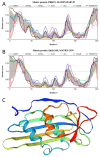
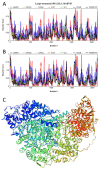

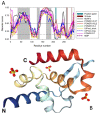

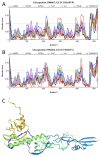
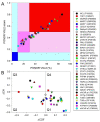


Similar articles
-
Intrinsic Disorder in the Host Proteins Entrapped in Rabies Virus Particles.Viruses. 2024 Jun 4;16(6):916. doi: 10.3390/v16060916. Viruses. 2024. PMID: 38932209 Free PMC article.
-
Identification and Characterization of a Small-Molecule Rabies Virus Entry Inhibitor.J Virol. 2020 Jun 16;94(13):e00321-20. doi: 10.1128/JVI.00321-20. Print 2020 Jun 16. J Virol. 2020. PMID: 32321812 Free PMC article.
-
Establishment of Human-Induced Pluripotent Stem Cell-Derived Neurons-A Promising In Vitro Model for a Molecular Study of Rabies Virus and Host Interaction.Int J Mol Sci. 2021 Nov 5;22(21):11986. doi: 10.3390/ijms222111986. Int J Mol Sci. 2021. PMID: 34769416 Free PMC article.
-
Research Advances on the Interactions between Rabies Virus Structural Proteins and Host Target Cells: Accrued Knowledge from the Application of Reverse Genetics Systems.Viruses. 2021 Nov 16;13(11):2288. doi: 10.3390/v13112288. Viruses. 2021. PMID: 34835093 Free PMC article. Review.
-
How order and disorder within paramyxoviral nucleoproteins and phosphoproteins orchestrate the molecular interplay of transcription and replication.Cell Mol Life Sci. 2017 Sep;74(17):3091-3118. doi: 10.1007/s00018-017-2556-3. Epub 2017 Jun 9. Cell Mol Life Sci. 2017. PMID: 28600653 Free PMC article. Review.
Cited by
-
Design and construction of multi epitope- peptide vaccine candidate for rabies virus.Bioinformation. 2023 Feb 28;19(2):167-177. doi: 10.6026/97320630019167. eCollection 2023. Bioinformation. 2023. PMID: 37814687 Free PMC article.
-
Vaccine Strategies Against RNA Viruses: Current Advances and Future Directions.Vaccines (Basel). 2024 Nov 28;12(12):1345. doi: 10.3390/vaccines12121345. Vaccines (Basel). 2024. PMID: 39772007 Free PMC article. Review.
References
-
- Rupprecht C.E. Rhabdoviruses: Rabies Virus. In: Baron S., editor. Medical Microbiology. 4th ed. University of Texas Medical Branch; Galveston, TX, USA: 1996. - PubMed
-
- ViralZone. Lyssavirus. [(accessed on 20 July 2020)]. Available online: https://viralzone.expasy.org/resources/Rhabdoviridae_virion.jpg.
MeSH terms
Substances
LinkOut - more resources
Full Text Sources
Medical

